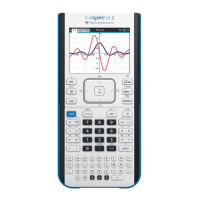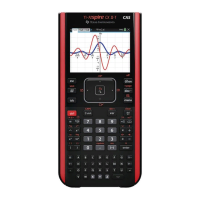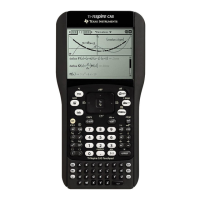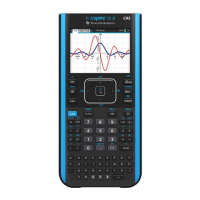58 TI-Nspire™ Reference Guide
log()
/
s
keys
log(Va lu e 1[,Va lu e2 ]) ⇒ value
log(List1[,Val ue 2 ]) ⇒ list
Returns the base-Value2 logarithm of the first argument.
Note: See also Log template, page 2.
For a list, returns the base-Value2 logarithm of the elements.
If the second argument is omitted, 10 is used as the base.
If complex format mode is Real:
If complex format mode is Rectangular:
log(squareMatrix1[,Va l ue ]) ⇒ squareMatrix
Returns the matrix base-Va lu e logarithm of squareMatrix1. This is
not the same as calculating the base-Va l ue logarithm of each
element. For information about the calculation method, refer to
cos().
squareMatrix1 must be diagonalizable. The result always contains
floating-point numbers.
If the base argument is omitted, 10 is used as base.
In Radian angle mode and Rectangular complex format:
To see the entire result, press £ and then use ¡ and ¢ to
move the cursor.
Logistic
Catalog
>
Logistic X, Y[, [Freq] [, Category, Include]]
Computes the logistic regression y = (c/(1+a·e
-bx
)) on lists X and Y
with frequency Freq. A summary of results is stored in the
stat.results variable. (See page 97.)
All the lists must have equal dimension except for Include.
X and Y are lists of independent and dependent variables.
Freq is an optional list of frequency values. Each element in Freq
specifies the frequency of occurrence for each corresponding X and Y
data point. The default value is 1. All elements must be integers | 0.
Category is a list of numeric or string category codes for the
corresponding X and Y data.
Include is a list of one or more of the category codes. Only those data
items whose category code is included in this list are included in the
calculation.
For information on the effect of empty elements in a list, see “Empty
(void) elements” on page 131.

